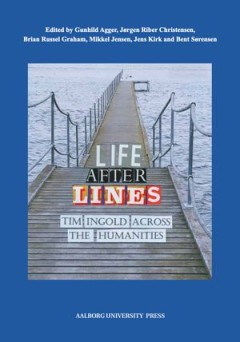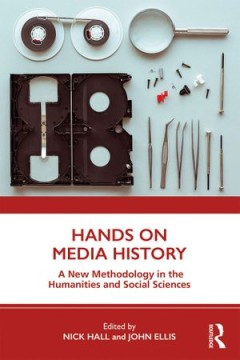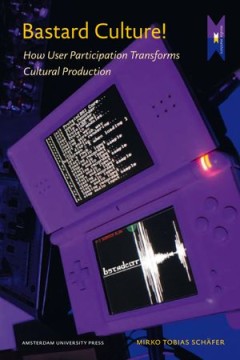Filter by

Life After Lines : Tim Ingold across the humanities
“What do walking, weaving, observing, singing, storytelling, drawing and writing have in common? The answer is that they all proceed along lines of one kind or another.” This is the first Q&A in Tim Ingold’s seminal Lines. A brief history (2007). In The Life of Lines, the sequel from 2015, he opposes lines and blobs and proceeds: “Life began when lines began to emerge and to escape the …
- Edition
- -
- ISBN/ISSN
- 978-87-7210-287-0
- Collation
- -
- Series Title
- -
- Call Number
- 302.23 LIF

Hands on media history : a new methodology in the humanities and social science
Hands on Media History explores the whole range of hands on media history techniques for the first time, offering both practical guides and general perspectives. It covers both analogue and digital media; film, television, video, gaming, photography and recorded sound.Understanding media means understanding the technologies involved. The hands on history approach can open our minds to new perce…
- Edition
- -
- ISBN/ISSN
- 9781351247412
- Collation
- -
- Series Title
- -
- Call Number
- 302.23 HAN

Bastard Culture! : How User Participation Transforms Cultural Production
New online technologies have brought with them a great promise of freedom. The computer and particularly the Internet have been represented as enabling technologies, turning consumers into users and users into producers. Furthermore, lay people and amateurs have been enthusiastically greeted as heroes of the digital era. This thoughtful study casts a fresh light on the shaping of user participa…
- Edition
- -
- ISBN/ISSN
- 978 90 4851 315 4
- Collation
- -
- Series Title
- -
- Call Number
- 302.23 SCH b

Avoiding the Subject : Media, Culture and the Object
What can Roger Rabbit tell us about the Second Gulf War? What can a woman married to the Berlin Wall tell us about posthumanism and inter-subjectivity? What can DJ Shadow tell us about the end of history? What can our local bus route tell us about the fortification of the West? What can Reality TV tell us about the crisis of contemporary community? And what can unauthorized pictures of Osama Bi…
- Edition
- -
- ISBN/ISSN
- 90 5356 716 X
- Collation
- -
- Series Title
- -
- Call Number
- 302.23 CLE a

The personality cult of Stalin in Soviet posters, 1929–1953 Archetypes, in…
From 1929 until 1953, Iosif Stalin’s image became a central symbol in Soviet propaganda. Touched up images of an omniscient Stalin appeared everywhere: emblazoned across buildings and lining the streets; carried in parades and woven into carpets; and saturating the media of socialist realist painting, statuary, monumental architecture, friezes, banners, and posters. From the beginning of the …
- Edition
- -
- ISBN/ISSN
- 9781760460624
- Collation
- -
- Series Title
- -
- Call Number
- 741.670947
 Computer Science, Information & General Works
Computer Science, Information & General Works  Philosophy & Psychology
Philosophy & Psychology  Religion
Religion  Social Sciences
Social Sciences  Language
Language  Pure Science
Pure Science  Applied Sciences
Applied Sciences  Art & Recreation
Art & Recreation  Literature
Literature  History & Geography
History & Geography